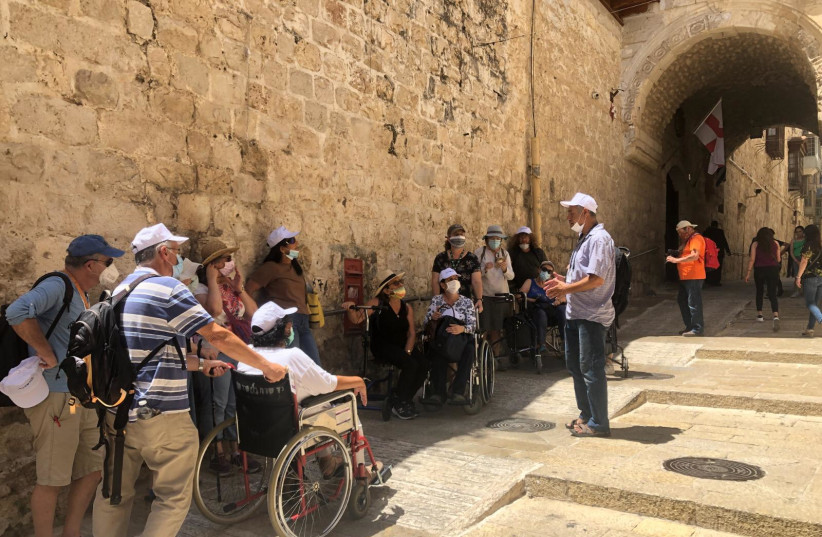The Old City, all of one square kilometer, is the area many call the “atomic reactor of the Middle East,” maybe of the whole world. Particular attention is focused on the Temple Mount – or, as Muslims call it, al-Haram al-Sharif, Islam’s third-holiest place. For Jews, it’s their holiest site.
During the last five years, thanks to a generous government budget allocated for this purpose (the 3790 plan), some NIS 2.3 billion was approved to improve infrastructure in the Old City, including a budget to make the alleyways accessible to people with disabilities.
The ambitious project ended about a year ago. Now the Old City is more accessible for those in wheelchairs, as well as for pedestrians who need special support along its passageways. The improvements are impressive, and the thousands of pilgrims who have returned to the city after the pandemic are benefiting from the upgrades.
Why is the Temple Mount not accessible for people with disabilities?
However, the Temple Mount has remained untouched – for the same reason that no works have been permitted at the hazardous Mughrabi Bridge, which connects the Western Wall Plaza to the Temple Mount. There haven’t been any changes to the area due to the desire to prevent local riots, the consequences of which would soon reach the UN Security Council and the rest of the Muslim world. No one has any idea when, if at all, it will be possible to have a reasonable and calm discourse about this area.
Enter the Betzalmo organization, which wants to expand works in the Old City and the Temple Mount. The organization maintains that the improvements will benefit Jews, as well as Muslims and tourists. This may seem like a very reasonable demand, and one can only wonder why it has not been done until now. However, Betzalmo’s request is not innocent, since the organization knows what would happen if these works were to be approved.

Those who managed the infrastructure work in the Old City – though not on the Temple Mount – have pointed out repeatedly that improvements to the Temple Mount should only be conducted in full partnership with the residents, to lower their suspicion and hostility and yield positive results. This was the approach that was taken to improve the infrastructure and accessibility in the Old City.
However, infrastructure and accessibility in the Old City alleys are not at all similar to the accessibility works on the Temple Mount, even if such accessibility for the disabled would also benefit Muslims who pray in the complex.
Betzalmo CEO Shay Glick appealed this week to the Israel Police with a request to make the pedestrian paths on the Temple Mount accessible to people with disabilities. The police responded: “We see great importance in making the place accessible [for people with disabilities].”
“We see great importance in making the place accessible [for people with disabilities].”
Israel Police
Glick, who already has on his CV accessibility of Hebron’s Cave of the Patriarchs for the disabled, welcomed the police response. He is convinced that in the coming years the Temple Mount, like the Cave of the Patriarchs, will be accessible to anyone who is disabled.
We will have to wait and see what happens first: physical improvements of the Temple Mount for the disabled – including Muslims, Jews and Christian tourists – or more restlessness for Jerusalem. ❖
